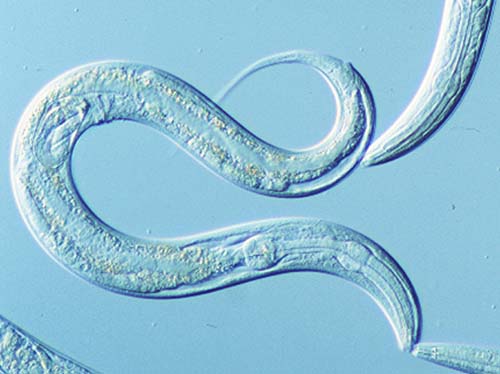Stopping jumping genes could increase lifespan, at least in worms

Roundworms are the most commonly used animal model to investigate aging and methods to increase the lifespan such as intermittent fasting. Latest research indicates that jumping genes could be another target for interventions aiming towards expanding the lifespan.
What are jumping genes? Also called transposons, are movable stretches of DNA of possible viral origin that can insert themselves anywhere in the genome. Although very common, depending on the point of insertion, they may introduce mutations to previously functional regions in the genome and generate genomic instability. Alas, one characteristic of aging is the presence of this type of genomic instability.
Previously, the Piwi-piRNA system had been identified as a regulatory mechanism for transposons in immortal cells like cancerous ones, which despite their genomic instability keep on reproducing and stay alive. This new research 1 demonstrates that controlling this system, and with it the jumping genes, can expand the lifespan in roundworms (Caenorhabditis elegans).
First, they observed that activating the Piwi-piRNA system, thus blocking transposon activity increased the worm’s lifespan 1–4 days longer than in controls for which the Piwi-piRNA system functions naturally. Moreover, they found that the more jumping genes they inhibited, the longer the increase in lifespan obtained. This proves the point that the Piwi-piRNA system indeed controls transposons, and that the presence of transposons is linked to aging and the lifespan. Finally, they found that with aging, their jumping genes were epigenetically modified (that means that although their sequence remained unchanged, the signals indicating whether they are expressed were altered) so that their expression, and associated jumping, increased. This is very interesting as it may offer a new target for interventions aiming to increase the healthy lifespan. In addition, given the relationship between aging and epigenetic modification of transposons, this could be used as a very specific biological clock.
References
- Sturm, Á., Saskői, É., Hotzi, B. et al. (2023) Downregulation of transposable elements extends lifespan in Caenorhabditis elegans. Nat Commun doi: 10.1038/s41467-023-40957-9 ↩